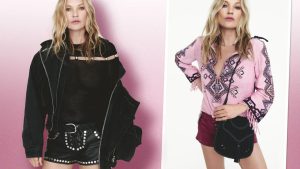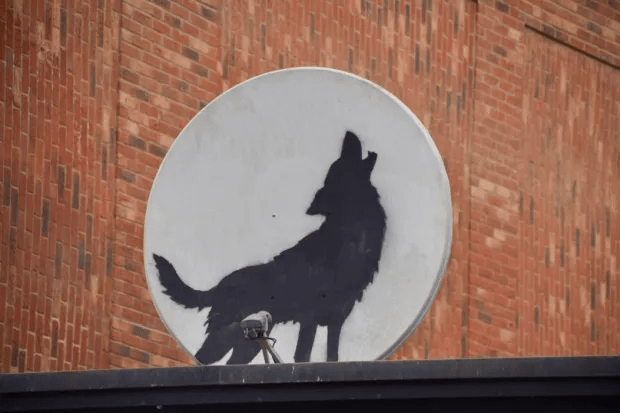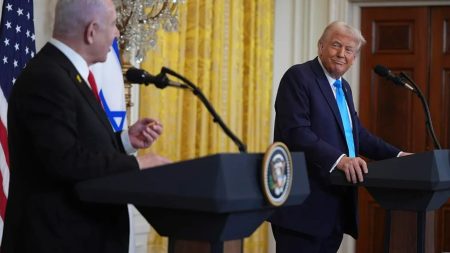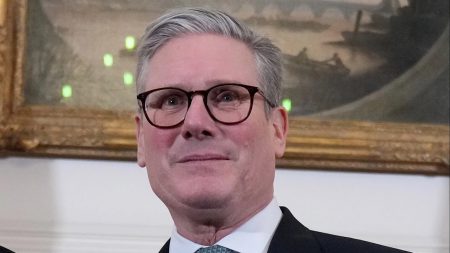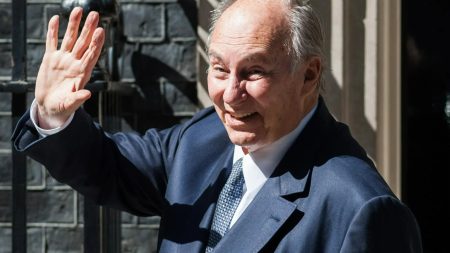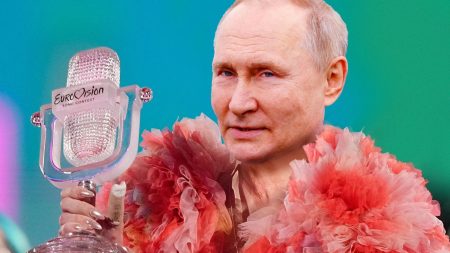Banksy, the elusive graffiti artist renowned for his satirical and politically charged street art, faces a legal battle that could jeopardize his ownership of his own name. A greeting card company, Full Colour Black, and its owner, Andrew Gallagher, are challenging Banksy’s trademark of his name, arguing that he has failed to use it commercially. This case hinges on the artist’s characteristic anonymity and his historically ambivalent relationship with commercialization. Gallagher, who sells photographs of Banksy’s public work, has applied for the trademark’s cancellation on grounds of “non-use,” forcing Banksy’s representatives to provide evidence of merchandise sales between 2017 and 2022. This legal challenge presents a significant threat to Banksy’s control over his brand and artistic legacy.
The upcoming tribunal, scheduled for April at the Intellectual Property Office, marks a pivotal moment. For the first time, a member of Banksy’s team will be required to give evidence publicly, acting as a conduit for the artist’s voice while maintaining his anonymity. This representative, a director of Banksy’s authentication and handling service, Pest Control Office, will need to demonstrate sufficient commercial use of the Banksy trademark to retain its validity. This unprecedented situation highlights the tension between Banksy’s anti-establishment ethos and the legal necessities of protecting his work in a commercialized art world. The challenge lies in proving commercial engagement without compromising the artist’s carefully cultivated anonymity and anti-capitalist stance.
Banksy’s aversion to commercialism is well-documented, exemplified by his past statement, “copyright is for losers.” However, Pest Control Office argues that this sentiment doesn’t grant others the right to misrepresent the artist or engage in fraudulent activities. They maintain that while Banksy might disdain traditional commercial practices, he has engaged in limited merchandise sales through his online store, including items like clocks, cushions, mugs, t-shirts, and even a handbag. The central question in the case revolves around whether these activities constitute sufficient use of the trademark to prevent its cancellation. The outcome will significantly impact Banksy’s ability to control the commercial exploitation of his name and image.
The legal battle with Full Colour Black isn’t isolated; it’s intertwined with a separate defamation lawsuit filed by Gallagher against Banksy over an Instagram post allegedly encouraging theft from a GUESS store displaying Banksy-inspired designs. These concurrent legal challenges further complicate the situation, potentially revealing more about Banksy’s operations and potentially threatening his carefully constructed public image. The intersection of these cases underscores the difficulty of maintaining anonymity while navigating complex legal battles involving intellectual property and reputation. The potential for unwanted exposure remains a significant concern for the artist.
The case also raises broader questions about the nature of trademark law and its applicability to an artist like Banksy. Gallagher argues that the widespread descriptive use of the name “Banksy” has diluted its trademark significance, suggesting that the public no longer associates the name exclusively with merchandise or artwork directly produced by the artist. This argument challenges the conventional understanding of trademarks and highlights the complexities of applying these principles to an artist who operates outside the norms of the art market. The tribunal’s decision will likely have implications beyond this specific case, potentially influencing how trademark law is interpreted in the context of street art and anonymous artistic practices.
Banksy’s previous responses to legal challenges and his evolving relationship with commercial activities add further layers of complexity. His 2019 pop-up shop, Gross Domestic Product, launched in response to legal battles, represents a calculated move to assert ownership and control over his brand. This strategic foray into the commercial realm, featuring merchandise like Stormzy’s Glastonbury stab-proof vest, demonstrates an evolving approach to commercialization, likely driven by the necessity of protecting his work from unauthorized exploitation. The tribunal’s decision will significantly impact not only Banksy’s legal standing but also the future trajectory of his artistic endeavors and his control over the commercialization of his brand.


